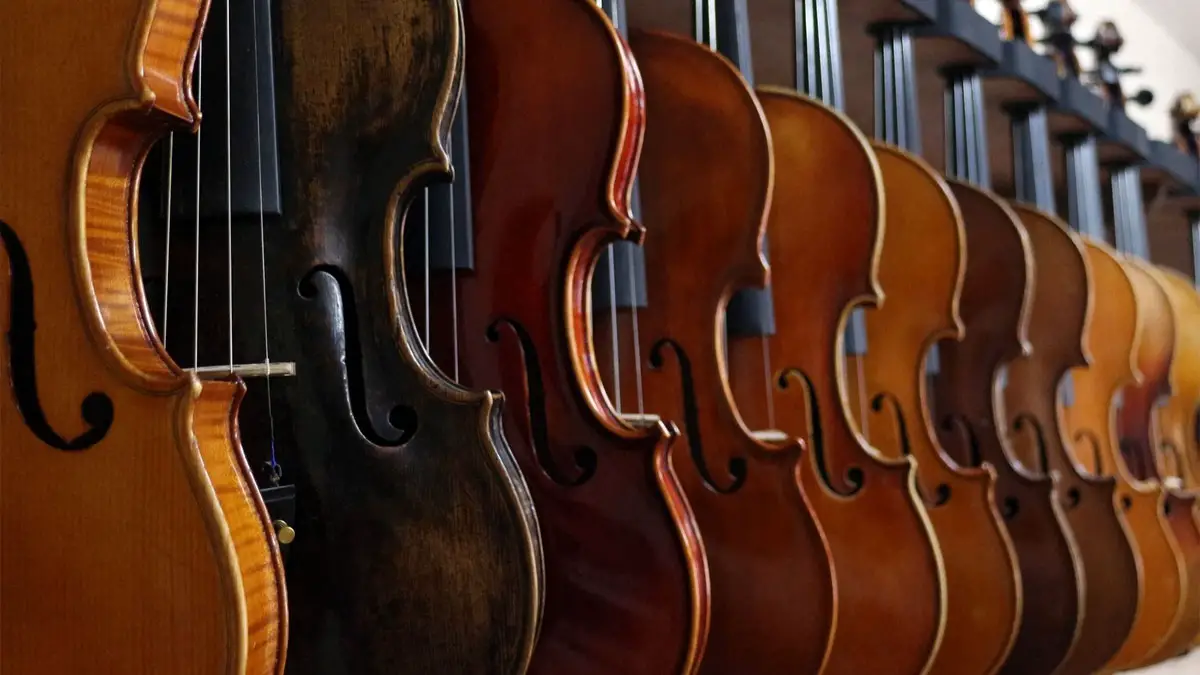In the world of music, one of the instruments often associated with calm, soothing melodies is the violin. However, the violin family also includes fiddles, a variation of the violin which is played fast and loose, compared to the careful, structured pace of violins.
But despite the difference in play style, violins and fiddles are nearly identical and the names are often used interchangeably.
There are quite a few types of violins out there, some of which look completely alien. Let’s take a look at some of these different violins and what makes each unique.
Related: 13 Types of Cellos
Types of Violin
1. Baroque Violin
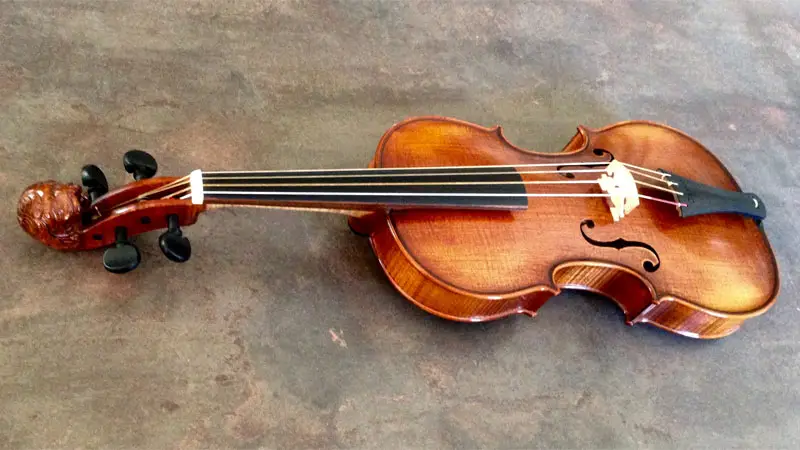
This is the pinnacle of classic violins and are very similar to the modern violin. Most popular from 1650 into the 1750s, it has a special bridge designed to make playing double strings easier at the cost of making single strings harder to play.
Many of the components are a different size from the modern violin as well, and there’s no chin rest. The shorter fingerboard is accompanied by a more shallow angle as well. These differences give the baroque violin a softer tone, often with very little or no vibrato, and you’ll often find them tuned to a lower pitch than modern violins.
2. Devil’s Fiddle

When is a violin not a violin? When it’s the devil’s fiddle. Despite that sounding like a joke, it’s actually a peculiar truth. The devil’s fiddle began its life as a large fiddle, but in much of the world, it has evolved into a percussion instrument. A bowed fiddle version still exists in Lithuania.
Originally, the devil’s fiddle has a fiddle-like body with a flexible stick for the body and neck, and an inflated animal bladder for the resonator that was placed between the bowstring and stick. It could have one to three strings, although the modern version features three strings and tuning pegs.
3. Electric Violin
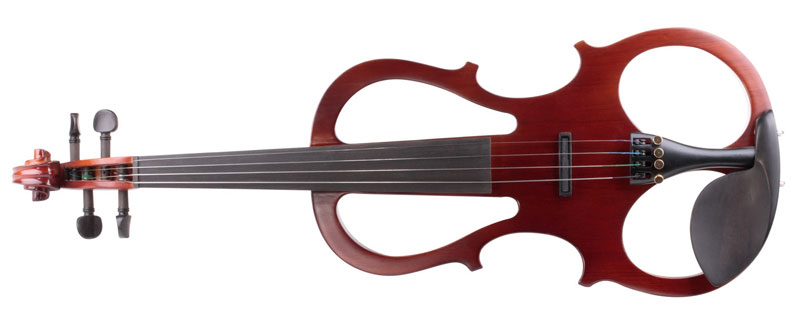
Electric violins are a curious-looking creature. There’s no sound box and almost all sound is created through an external amplifier. Depending on the model, you can have four or five strings.
The sound on a quality electric violin is sharper than an acoustic one, but also tends to sound more artificial. Thanks to the lack of a sound box, the body can be purchased in a wide variety of unusual shapes.
The big caveat is that you want to avoid purchasing cheaper models. Unlike an acoustic violin which tends to retain a lot of the quality even at low cost, cheap electric violins can be poorly built and have inferior sound quality. However, one curious advantage to this type of violin is that you can actually build your own using a 3D printer.
See Also: 19 Types of Flutes
4. Fiddle
As mentioned, the fiddle is actually a type of violin. It got its name because the player “fiddles” with the bow and strings. It was invented in the 1500s by Andrea Amati, who based its design on older bowed instruments. Fiddles have a flat bridge and straight bow, making it easy to make double and triple stops while playing.
Originally, the fiddle was popular in lower-class Italian festivities, but it has since become far more widespread. These days, the term fiddle is most often used to describe any violin played by country and folk bands and is no longer associated with the physical design itself.
Another common way people distinguish between calling a violin a violin or fiddle is in the play style. The violin is played using sheet music and tends to be slow and melodic.
However, thanks to the original fiddle design, fiddle music is often off-the-cuff, fast, and quite often just provides an accompaniment for other instruments or a singer, much like the bass guitar.
5. Hardanger Fiddle
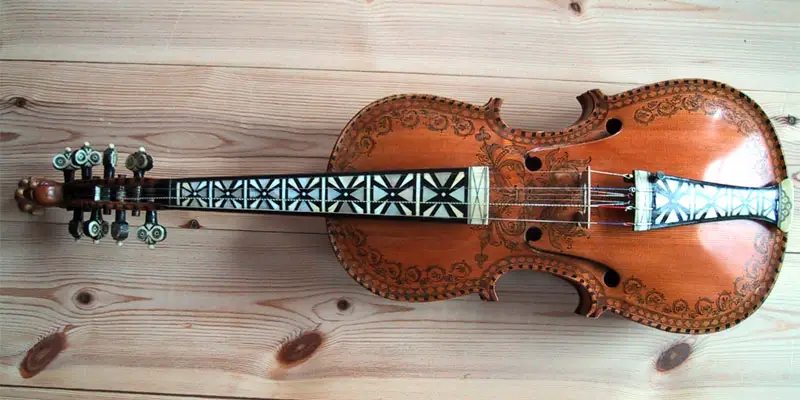
This Norwegian instrument is very similar in design to a modern violin, but with one major difference – it has eight to nine strings instead of four. However, it’s played just like the modern violin, with the additional strings being behind the four played strings and acting as additional resonance.
Natively known as a Hardingfele, the instrument is used extensively in bridal processions and folk music.
Hardangers are made of a thinner wood than the modern violin and tend to be highly ornate. They’re decorated with black ink and carved images of animals, with mother-of-pearl often embedded on the fingerboard and tallpiece.
It’s believed to have been invented in Hardanger, Norway in 1651 by Ole Josen Jasstad, although the current shape wasn’t perfected until 1850.
6. Modern Violin
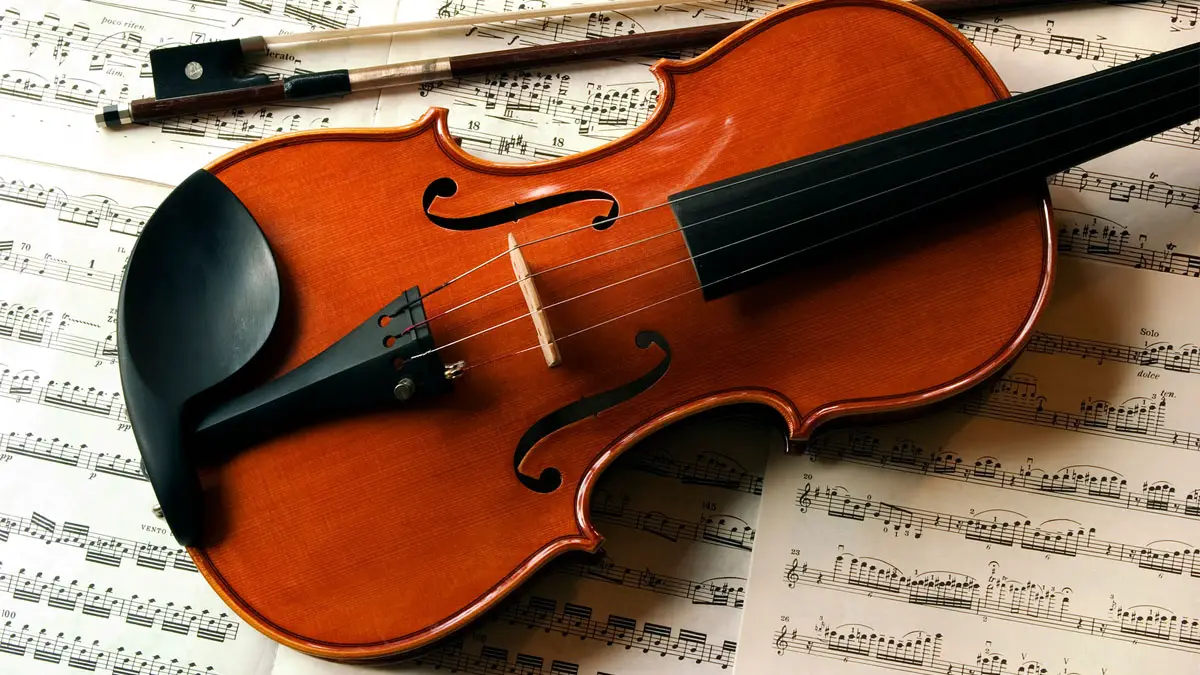
This is the most common type of violin in use today and the one you’re probably familiar with. It has a hollow sound box to amplify the sound made when the Tourte bow is pulled across the four strings, and the construction is made from wood.
7. Pochette
There are many jokes about the world’s smallest violin, but the pochette (literally French for “small pocket”) is a real-life effort.
These violins are sometimes known as pocket fiddles and were popular among street musicians from the 1400s into the 1800s. It features a long fingerboard to help preserve its range, but is small and easy to carry.
See Also: 13 Types of Clarinets
8. Semi-Acoustic Violin
Also known as an Acoustic-electric violin, this hybrid design shares the hollow body of a modern violin, but also has electronic components built into the body. They create less feedback than an electric violin and often have much narrower or strangely shaped sound boxes from acoustic violins.
You can play the violin acoustically or use the jack to connect it to an external amplifier. Unlike silent violins, the semi-acoustic violin won’t work with headphones.
Acoustic violins can also be converted into semi-acoustic violins by adding a pickup. This is a more popular choice for those who already have an acoustic violin due to the lower cost.
Additionally, because the sound quality isn’t as refined on a semi-acoustic, the ability to freely add and remove the pickup means you can convert the violin between the two whenever you want.
9. Silent Violin
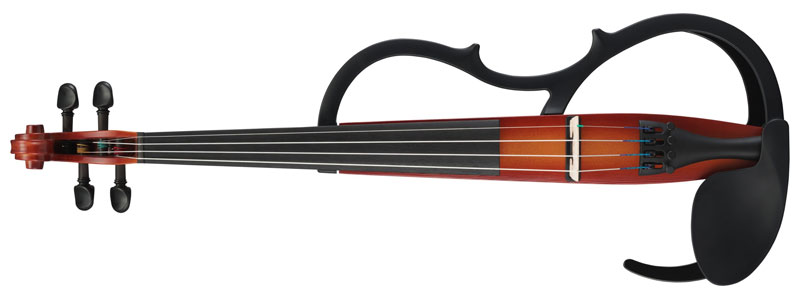
This is a variant of the electric violin that offers a “silent” option. This is made possible by the 2mm jack, which replaces the 6.3mm jack on a regular electric violin, as well as a few other minor differences in the electronics themselves.
With these changes, it’s possible to plug the violin into either an amplifier or a pair of headphones.
Of course, the silent violin isn’t actually silent, and those around you will still be able to hear you play. However, by using headphones, you can get the full effect while everyone else gets minimal interruption.
You can further reduce the sound output of both silent violins and acoustic violins through the use of a mute, which can be purchased in a wide range of sizes and materials. Mutes reduce the sound output of the strings, although metal ones may cause minor damage to a wooden violin.
10. Stroh Violin
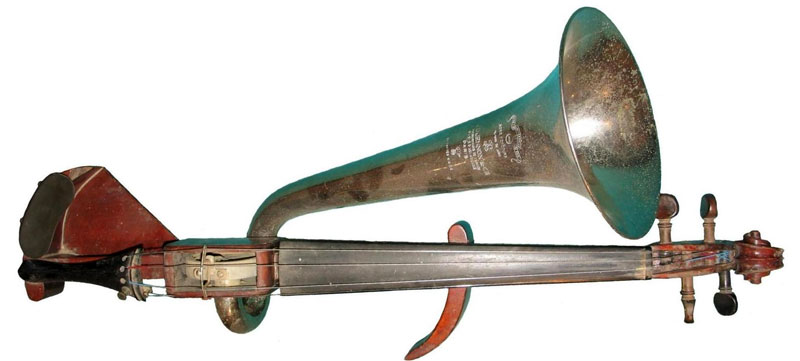
One of many violins made famous by Lindey Stirling, the Stroh violin was invented by John Matthias Augustus Stroh in the late 1800s. Despite looking more like a crossbow than a musical instrument, it’s actually louder than most violins, thanks to the metal resonator and horn.
The instrument is extremely versatile and is popular among street musicians because it doesn’t require the use of an amplifier.
11. Vielle
This medieval instrument is a predecessor of the violin with a longer and deeper body. It could have three to five strings, and the pegs on the pegbox faced front instead of being on the sides.
The body was generally oval, although there were variations up until the lira da braccio popularized the shape we’re more familiar with today. It was quite popular among bards and other performers, and also sometimes went by some very familiar-sounding names: fidel and viuola.
Read Also: 16 Types of Accordians
12. Viola

The viola is very similar to the modern violin, except the sound is a fifth lower and produces deep, warm tones.
When played in an orchestra or group, it tends to serve as the middle voice, although it’s also very popular as a replacement for the violin in solo performances. Another great advantage of the viola is that it’s easy to learn, especially among adults.
13. Violin Octet
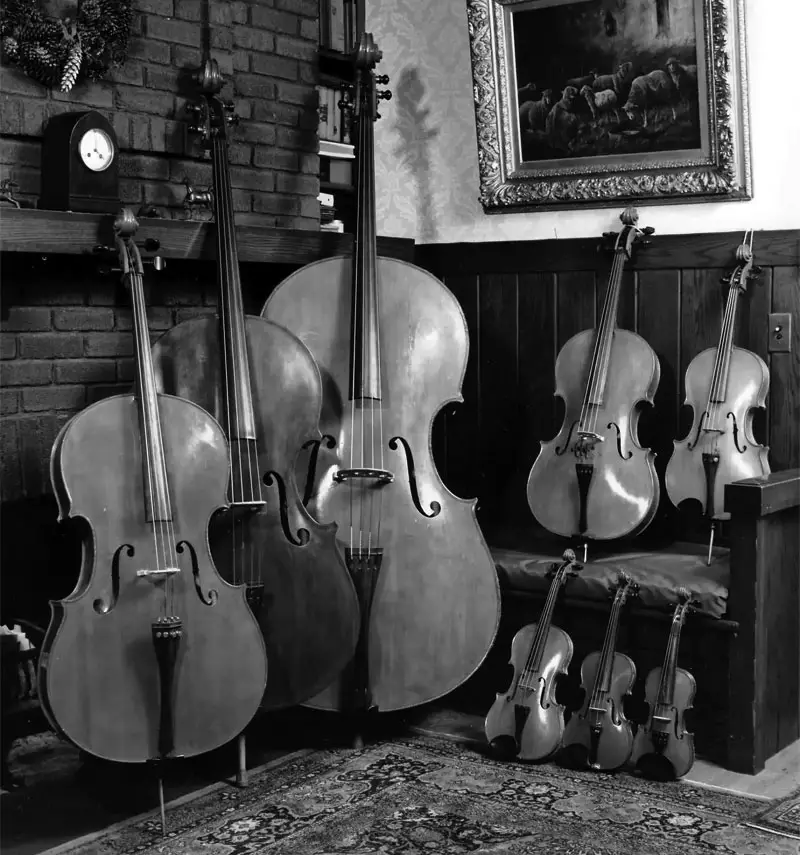
Based on traditional violin designs, the violin octet was created to produce a richer, more homogenous sound. This is achieved by pitching the resonance towards the middle two strings. The design was proposed by Henry Brant in 1957, but it took a decade to develop.
Of course, being an octet, this isn’t a single violin, but a complete set of eight, all designed specifically to be played together. The set consists of an alto violin, baritone violin, contrabass violin, mezzo violin, small brass violin, soprano violin, tenor violin, and treble violin.
The musicians in the octet can choose which bow best suits them, allowing for some slight variation between one octet and another. Because the violin octet is an eight-piece set, it’s not very common and only a few groups use them in performances, often only incorporating part of the octet into the performance.

